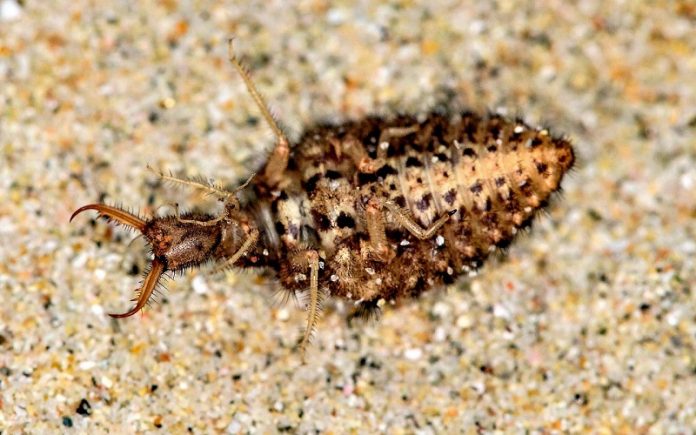
Have you ever heard the phrase “playing possum”?
It refers to a behavior seen in many animals where they pretend to be dead to avoid being eaten by predators.
But what happens after these animals stop pretending?
A recent study by scientists from the University of Bristol has explored this question, specifically looking at antlions, and found that what these insects do after “playing dead” depends on the situation they find themselves in.
The findings were published in the journal PLoS ONE.
Antlions are small insects that often use death-feigning as a last-ditch effort to escape predators. When threatened, they become completely motionless, hoping the predator will lose interest and leave them alone. This behavior is not just seen in antlions but is common across many species, even in extreme situations involving humans.
In earlier studies, the same research team observed that antlion larvae would freeze and remain motionless when handled. This behavior became particularly noticeable when the researchers needed to weigh these tiny insects. If the antlions moved on the weighing scale, it made it difficult to measure their weight accurately. However, when the larvae were gently dropped onto the scale, they stayed perfectly still for long enough to get an accurate measurement.
Curious about this behavior, Emeritus Professor Nigel Franks and his team decided to investigate further. They found that the duration of time each antlion remained motionless was highly unpredictable for any individual insect. By observing many antlions, they noticed that while the exact timing of when each insect would move again was random, the overall pattern of behavior across the population was predictable. This pattern is similar to the way radioactive atoms decay at random times individually but show a predictable pattern when observed as a group.
The researchers suggest that this unpredictability is an adaptive strategy. When a predator picks up and then drops an antlion, it can’t tell how long the insect will stay still before moving again. This uncertainty may discourage the predator from waiting around, giving the antlion a better chance to survive.
One antlion in the study remained still for over an hour, showing just how effective this strategy can be. But what happens after the antlion decides to “come back to life”? The study found that this depends on the environment the antlion is in.
Antlion larvae typically live in sandy or loose soil where they dig small pits to trap prey. If dropped onto a soft substrate, they might quickly burrow into it to escape. However, if they find themselves on a hard surface where burrowing isn’t possible, they need to find another way to stay safe.
Using advanced video tracking, the researchers observed that antlions adjust their behavior based on the surface they are on. If they can’t burrow, they might move in a way that helps them find shelter or hide from predators.
Professor Franks noted that this study might be the first to explore what animals do after they stop playing dead, showing that their actions are context-dependent. This research opens up new possibilities for studying how other animals that exhibit this behavior, known as thanatosis or post-contact immobility, make decisions after “coming back to life.”
This fascinating study reveals that even after an animal stops “playing dead,” its behavior is carefully adapted to increase its chances of survival, depending on the situation it finds itself in.



